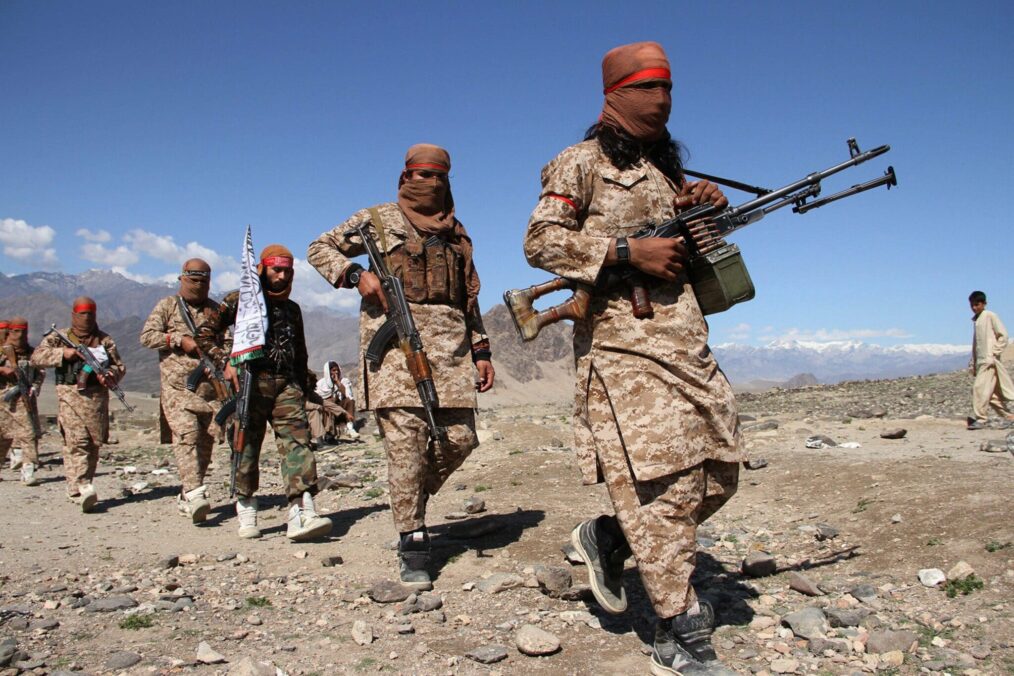
The Taliban And Mujahideen: Comparisons And Lessons Learned
At the time of the Soviet invasion, those fleeing from Afghanistan to Pakistan were one of the largest refugee populations in the world. They flooded border towns like Peshawar and Quetta. These locations aided mujahideen leaders in recruitment efforts from growing refugee camps, for their militias. Hundreds of madrassas indoctrinated these refugees to justify their holy war against Soviet forces. Twenty years later, the Taliban utilised the same infrastructure to radicalise their followers against the Americans.
Lessons To Learn
Parallels can be drawn between the anti-Soviet resistance in the 1980s and the mujahideen and Taliban. The ideas that advanced American policies in Afghanistan during the 1980s can provide useful lessons concerning counterinsurgency and counterterrorism operations. Although the Taliban and mujahideen have different adversaries, their origins and ideology remain rooted in Islamic teachings.
The same actors of the 1980s are still actively influencing local politics today. For this analysis, mujahideen will refer to the Afghans who drove the Red Army out of Afghanistan in 1989. The refugee crisis served to fuel both groups’ objectives and many of the poor conditions from the 1980s remain today. Policy makers can learn valuable lessons from the Taliban and mujahideen’s resistance and address the conditions that lead to violent extremism.
The same names from the Soviet resistance appear frequently in current Afghan politics and in the Taliban’s leadership. Abdullah Abdullah, Abd Rasul Sayyaf, and Amrullah Saleh, were vital in military successes against Soviet forces. They also currently hold senior political or governmental positions. Gulbuddin Hekmatyar, who was one of the most effective rebel commanders during the resistance, also leads the Jamaat-Islami party. Although much about senior Taliban leaders like Haibatullah Akhundzada and Abdul Ghani Baradar are unknown, their estimated birthdays put them in their teens or early twenties during the Soviet occupation. This would have made them impressionable to years of anti-Soviet, anti-occupation ideology.
Indoctrination in Pakistan
Afghan asylum seekers in Pakistan have bleak prospects because there is no path to Pakistani citizenship. Persistent, dismal conditions during the 1980s and 2000s were prime recruitment opportunities for armed groups, providing religious purpose and money. According to Ahmad Shah Mohibi, many young Taliban fighters are children of former mujahideen and refugees indoctrinated in Pakistan. Additionally, disenfranchised Islamist leaders in the current government could inspire their relatives to join the Taliban or other militant groups.
Radical mujahideen-era commanders like Hekmatyar and Jalaladdin Haqqani did not achieve their political visions for Afghanistan and may retain motives to undermine the government. After the 1996 fall of Kabul, many in Hekmatyar’s circle joined the Taliban after he was exiled to Iran. After two decades of foreign occupation, why would Hekmatyar change his 1980s-era anti-American sentiment? Some in his party support the Taliban and call their victories against NATO forces, “the pride of Afghans.”
Pakistan was and remains the most important actor for the mujahideen and Taliban. During conflict, Islamabad covertly supplied both groups with weapons and money to increase costs for their respective adversaries. As conflict subsided, Pakistan manipulated aid to favour proxies and increase the prospects of a Pashtun government, friendly to Islamabad. It seeks the same goals with the Taliban. Its madrassas and training camps in the semi-autonomous regions prepare fighters spiritually and physically, using decades of experience fighting Soviet and American forces. Its territory also provides both movements sanctuary to recruit and direct combat operations without fear of assassination. To understand how issues from the Cold War impact the current peace process, leaders must familiarise themselves with Afghanistan’s past.
Comparisons And Future Recommendations
Policy makers must simultaneously address the plight of refugees and work to limit Pakistan’s influence. The conditions and corruption of today, that force refugees to join terror groups, were also present after the Soviet withdrawal. They actually facilitated early support for the Taliban, who provided long-absent social and civil services after the civil war. Leaders in the region must facilitate refugees’ return to Afghanistan because they will continue to deteriorate in Pakistan with poor education and job insecurity.
Violent spoilers will complicate their return but relying on kinetic strikes only treats the symptoms of poor living conditions. More funds must be utilised to solve issues for counterterrorism methods like reforming children’s education, de-radicalising and integrating former Taliban. Other methods include creating a more inclusive political systems, and providing stable employment. With improved standards of life, Afghans are less likely to be less radicalised or resort to the Taliban to make ends meet or fulfil “religious” duties.
Pakistan’s role in covertly assisting armed groups and indoctrinating fighters must be also curbed. Solving only one of these issues would allow people to continue crossing the Pakistani border to fight or continue suffering in conditions that motivate extremism. In Islamabad’s constant rivalry with Delhi and its closer relations to China, how U.S. leaders can achieve cooperation after years of attempts is unclear. Islamabad’s security apparatus must reform internally for optimal results but this is unlikely because it uses religion to justify violence in Kashmir. Critics would argue that these steps are unrealistic, however, in a conflict with diverse actors and regional rivalries like Afghanistan’s, there are no easy steps. In addressing the underlying factors contributing to the Taliban’s growth can the U.S. help the Afghan people achieve peace.
Ending American Involvement
The United States learned the consequences for disengaging with Afghanistan too quickly in 1992. The environment that they left caused a civil war and an emerging Islamist movement. These circumstances provided sanctuary to terror groups. American presence in Afghanistan is a complex topic but the costs of their disengagement are far greater. America should not back out after more 2-decades of investing in partners, aid, and losing thousands of lives. Our leaders must know Afghanistan’s history and what conditions created and destroyed peace. Many are recurring themes throughout the world’s conflicts. It is the only way to invest resources effectively to stop terrorism.
